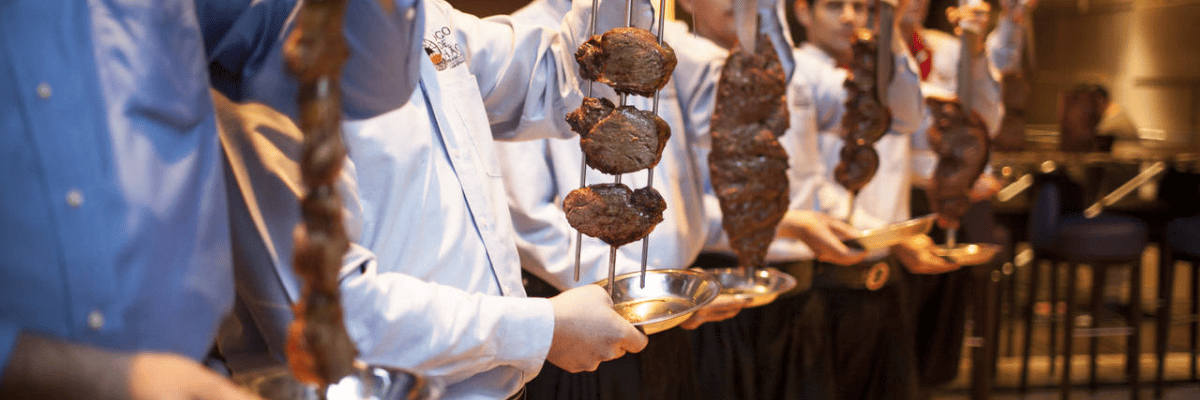- Ducky Tran
- Posts
- Gifting: Less is More
Gifting: Less is More
Issue 5 | Financial Wealth
Gifting: Less is More
Things have more meaning when it is not clouded by other things
The Pyramid of Luxuries
The Bespoke - $4,000 Vacation + $1,000 VISA eGift Card
The Ultra High End - $200 Shopping eGift Card
The Accessible Core - Gifting: Less is More
The Affordable Luxury - Do You Have Ideas to Grow Ducky Tran?
The Everyday Luxury - Cong: Leading the Referrals
The Bespoke
Click on the banner to enter The Bespoke Photo Contest. Click here for the Official Contest Rules.
Prize: $4,000 Vacation Voucher + $1,000 in VISA eGift Cards [ARV $5,012]
Odds: For every 760 Ducky Tran premium member by the time of judging, I will give out one (1) vacation bundle Prize
Contest Period: November 22, 2023 at 10 AM CST to December 31, 2023 at 10 PM CST
See Issue 1 for more content about The Bespoke Prize.
The Ultra High End
Previous Contest Winner
The winner for Issue 3 is Tam from Frisco, Texas, she won the $100 Pamper Yourself Gift Card! This was her submission for Issue 3, “a picture of how your hair is done when you go out”:

Congrats Tam!
This Week’s Contest
Click on the banner to enter The Ultra High End Photo Contest. Click here for the Official Contest Rules.
Prize: $200 Shopping eGift Card [ARV $204]
Odds: For every 90 Ducky Tran premium members by the time of judging, I will give out one (1) Shopping eGift Card
Contest Period: December 20, 2023 at 10 AM CST to December 26, 2023 at 10 PM CST
This week’s focus is financial wealth. This is my least favorite pillar when discussing wealth. Not because it is any less important or exciting, but because it has the most myths. I won’t be discussing all the myths, but I will give a few examples.
Myth #1: When you have less, you’ll spend less.
I’m sure many of you already went out to buy presents for loved ones for the upcoming holiday. During this winter season, the U.S. consumer is expected to spend approximately $900 on holiday items. Due to effects of the pandemic, about 30% of the U.S. population have financial concerns, 40% say they are spending less money, and about 50% say they are earning less than before the pandemic. So even though there is financial strain, people are spending more each year during the winter season. This shows that once people are used to spending a certain amount on their lifestyle, such as gifting, the average person does not just revert to spending less.
Lesson #1: Spending is a habit, so to spend less you must force yourself to do it for a certain amount of time repetitively before it can change. Unfortunately, the average American will not be able to do this because difficult habits, normally considered good habits, are often ignored, or given up on. While bad habits, the easier ones, tend to take over, such as how easy it is to order through an app or tap to mobile pay.
Like I’ve shown in the previous issues, habits can be reinforced by who you spend time with. I hope as this community grows, I can help you build the good habits you want to maintain and shed any bad habits you haven’t discarded.
This single lesson won’t change any spending you’ve already done. However, with the Shopping eGift Card I am giving out, it can be like taking back $200 you’ve already spent. Personally, I would take this gift card and use it as positive reinforcement to any good habits. Reward yourself so you have the motivation to keep pushing toward your goals.
This week’s Superpremium topic is Fogo de Chao.
I’ve been to Fogo de Chao multiple times, but this last weekend was not the best experience. I will be objective about the points that will be mentioned and at the end I’ll share the awkward experience and what to expect in fine dining.
Concept: If you haven’t had Fogo de Chao before, it is a Brazilian steakhouse chain with 58 locations in the U.S. The concept, like most Brazilian steakhouses, is an all-you-can-eat selection of flame-grilled meats that is brought to the table and sliced to order. You have an indicator that is red on one side and green on the other that tells the staff to stop or continue to bring different meats to the table. The concept isn’t new but it’s fine dining take does set it apart from many other locations which tend to be more casual. The dress and clientele of Fogo tends to ritzier and the restaurant’s posh ambiance almost demands this kind of dress and glam.
Pricing: Compared to many casual Brazilian steakhouses, Fogo is considered more expensive; however, they do have a better wine selection, salad bar and facilities. However, to me the most important thing at steakhouses should be the meats, and Fogo is not at the top as their meat selection have been gentrified to fit the clientele. Another large part of pricing is staff and service, Fogo fell short here every time. The gauchos that serve the meats is always in a rush and the large knives they carry to cut your meat just feels unsafe at times at the speed they’re maneuvering around a crowded restaurant.
Food/Drinks: I’ve already mentioned they don’t have the best selection of meats; however, the meats that they do serve are quite good. Still not at the top but of high quality and well-seasoned. They have a robust and delicious salad bar, but for good reason, they must be able to get you full on other stuff and not just meats. Like many restaurants, alcoholic beverages make a large portion of their revenue. Fogo has a huge selection of wines and cocktails that really cater to their clientele, but their non-alcoholic beverages fall short compared to others.
As a Brazilian steakhouse, Fogo is expensive but is a good fit for first-timers of this type of concept. Once you’ve been to a few more, Fogo becomes a little bit less appetizing apart from company dinners and special occasions, as they are used to handling and accommodating large parties all the time.
Myth #2: People treat you better when you have money.
Story Caveats: It was Saturday night at peak dinner time with a party of 15
My Weekend Experience: I didn’t expect to write this portion, but there’s a good lesson to learn at the end of this story. It was a social dinner setup by my wife’s co-workers. We arrived early to our reservation to wait over an hour after our reservation time to be seated. We were then brought to a table comprised of wooden tables/chairs and plastic tables/chairs (yes, the plastic folding chairs). The table was squeezed in an area that was not meant for a party of 15. The table had no plates so when the gauchos came by with the meats, I was bypassed multiple times until the management handed me an entree plate. From previous experiences, I know there should be about 15 meats that are in the rotation; however, we did not get to see the entire rotation by the time the kitchen was closed. I did not have my water glass refilled once the entire dinner. Lights came on before we got our desserts. We left shortly afterwards since we would make it home by midnight. Here are some takeaways for people that don’t frequent fine dining establishments:
Reservations is a must; however, the fine dining industry has changed quite a bit after the pandemic. Before the pandemic even without a deposit, most fine dining establishments would save a table for a reservation. After the pandemic, many restaurants do not reserve tables unless they require a deposit for the reservation because walk-up service is guaranteed diners while reservations are not guaranteed diners.
Plastic table/chairs are a no-no in a brick-and-mortar fine dining setting, unless it is a catering event. This was a shock to all of us, but we obviously waited too long to not sit down and eat. The business was obviously not prepared and could not turn down business to respect their other patrons. This should happen, unless you specifically request plastic tables/chairs.
Plates and silverware being laid out prior to seating patrons is one of the biggest etiquettes in fine dining. This was a no-no. Not only is it awkward for the customers staring at each other, but now the staff could not properly serve the customers.
Meats were supposed to be the star of this restaurant; however, the meats weren’t even showcased to its fullest due to poor guest seating management. It’s like going to a basketball game to only see free throws. They should already know how long it takes to go through a full rotation and stop seating customers to make sure they get the full experience they are paying for.
Water glasses being empty is a no-no in any restaurant setting. It is considered the most basic form of customer service in the restaurant industry. It shows that the staff were too busy and disorganize to maintain the most basic skill taught as a server.
Lights being turned on at the end of the night in fine dining indicates end of kitchen services and normally last call for beverages. However, because of the seating fiasco, our group didn’t get out desserts until after the lights were turn on making us feel rushed and a bit out of place. It’s like the comedy skits where you see the entire staff clean around your table while saying “you can stay as long as you like.”
5-hour dinner for fine dining is common, if it were an a la carte dinner or a tasting menu. But this was an all-you-can-eat restaurant, even with 15-people, should only be between 2-3 hours.
Lesson #2: Having money doesn’t mean people will treat you differently. Fame, kindness or personal connection, which are all social wealth, is most likely what makes people treat you differently. The best example is tipping someone after good service so they continue to give you good service from then on. People may think it’s because you’re rich, but you can be rich and never tip and people still dislike you if they believe they deserved a tip. Most of the “better treatment” you may be paying for but it may not be genuine.
My Fogo experience this weekend shows that because you can afford expensive dinners doesn’t mean you’ll be treated any better. But because we were with good company, our friends and coworkers, we got through something that would have been dealt completely different if we were alone. I’m glad we have our friends to talk to and distract us from the negatives in the moment.
This week’s Premium Core topic is the non-profit All Hands and Hearts.
There are many wonderful-sounding or exciting or just recognizable non-profits out there; however, many times those are the organizations that are the least impactful to the communities that need the help. Many times, those non-profits are self-serving and only feed the executives that started them without creating much change in the fields they advertise.
As part of Ducky Tran benefits, our goal is to improve the community around us and one way is to work with non-profit organizations that we can believe in. There’s a lot of research in vetting a great non-profit and so let me show you why I chose All Hands and Hearts as the first non-profit to give a shout out for:
They received the highest rating of A+ from charitywatch.org under the topic of International Relief & Development Charities. I won’t go over all it entails but to give a point of reference non-profits such as Susan G. Komen and American Heart Association doesn’t even show up on their top-rated charities list, meaning they received a lower score than B+.
They only take $3 to raise $100. This is extremely good when it comes to non-profits. For example. Project HOPE, which is a B+ on the top-rated list in the same category, takes $25 to raise $100.
93% of its funds are used for its charitable programs. Compared to charity: water, which is a B+ in the same category, only uses 74% of its funds for its charitable programs.
Lastly, the executives of All Hands and Hearts pay themselves fairly with the CEO making about $120K/year. Compared to the CEO of American Heart Association that gets paid $3.1M/year. I understand people need to be paid fairly for the work they do, but these are charities and meant to be “non-profit.” Making in the millions is not fair to the programs that could have used about $3M of funding.
These are some of the reasons why I chose All Hands and Hearts. Knowing that real charities like this exist in the wild makes me very happy.
All Hands and Hearts is an international non-profit that bring disaster relief wherever is needed. They track major storms to make sure they are on the forefront when it comes to providing aid and relief to disaster-stricken areas. I will post the donation link here so you can donate if you are moved to.
To show support to All Hands and Hearts and Ducky Tran’s commitment to support the community at-large, I have a proposed offer:
Deal #1: Any member that forwards their donation receipt to me by January 31, 2024, [email protected], I will match the donation on February 1, 2024 up to $1,000 total.
Please understand there is no pressure to donate. It is meant to be good information about a wonderful non-profit in case anyone wants to donate or has last minute tax mitigation, donations are tax-deductible. Right now, I believe the executives of All Hands and Hearts are also matching donations through 2023, up to $100K.
Here are some reminders on deals that are still active:
Deal #2: Any member that refers at least 12 premium members to Ducky Tran in 2023. I will give them 12 months of Ducky Tran Membership for FREE!
Deal #3: Any member that completes Deal #2, will have an opportunity to win $1,000 eGift Card from a drawing in January 2024.

The Accessible Core
Gifting: Less is More
There are a few meanings to “Less is More,” especially when it comes to gifting. I will tie each meaning to the focus of the week.
Myth #3: Can’t go wrong with a gift card.
This seems to be obvious, but it is overlooked due to the idea of negative social reciprocity and social shaming. This means if someone gives you a gift, you feel the need to give something in return; otherwise, you feel social shame from not reciprocating the action. However, often this results in more gifts more often of lesser quality because it comes from the feeling of urgency instead of well-thought-out intention.
Bad Example: My wife and I are going to a birthday party but forgot a present, so we grab a Target gift card. We receive some holiday cards, so my wife rushes out to put something together to send it to the few people that sent us cards. Our friends give our daughters birthday presents, but we realize they don’t have any kids. At this moment, we feel the need to reciprocate by doing something like giving a thank you card, or go to lunch, or send a thank video from the kids.
Good Example: When we were younger, I got my wife, then girlfriend, a charm bracelet. I bought her a few charms I knew she would love. Throughout the years, whenever we had a special occasion, we wanted to remember, we would buy a charm together that can be added to this charm bracelet. It remains a very special piece of jewelry to her for 16 years now.
Lesson #3: Doing all the things in the bad example isn’t wrong, but many times it’s mindless and without intention other than to reciprocate an action. Giving a gift card proves its monetary value but lacks personal intention. We should seek to gift with more meaning, it can even be money, but it should be with a purpose rather than only to reciprocate. This proves that many times more money doesn’t translate to anything meaningful, that’s why money is generally a medium for “success” rather than its measure.
Myth #4: The more gifts, the better.
This takes on the literal meaning of less is more. Physically giving less gifts can make it seem like more because you will notice it every time it happens.
Bad Example: When I was younger, a friend in high school got a weekly allowance, a form of gift. He would then use that allowance to buy cookies at lunch and trade his meal for more cookies. One day his parents decided to not give an allowance anymore and he got mad and broke his gaming console. His parents later gave his allowance again, but his attitude wasn’t any better. It continued all the way through high school.
Good Example: My family grew up quite poor, so an allowance wasn’t really in the picture. But occasionally, my dad would come home with some cash and just randomly hand it out to a few of us. It was just $5-$20, but we were always excited. Most of the time that money I saved up until Christmas time or special occasion. Regardless, every time I was going to use the money, I think about getting it from my dad and think about why he gave it to us. Now as a parent, I can see why and those few instances are even more valuable to me today.
Lesson #4: It’s doesn’t have to be worth more over time, but giving less frequently generally makes it more memorable. When gifting is too frequent, it can feel like an entitlement or you become numb to the reason of the gift. But if you happen to save money for 5 years to send your Muslim parents to Mecca. It will be the most memorable gift they’ve ever gotten, and I can assure they’ll forgo the birthday and holiday gift cards you’ve missed. Another example where more money doesn’t bring happiness, but it can even foster resentment or entitlement.
Myth #5: More expensive, more attractive.
Like this study shows, many givers tend to believe “more expensive, more attractive” when it comes to gifts. While the receiver tends to rate the lower cost as being “more thoughtful” and being a better gift.
Bad Example: A few years ago, my wife wanted a fancy brand-name necklace. I kept refusing to get it for her because I didn’t think it was worth the money. Eventually, I saved enough to get her this necklace she’s been wanting for a long time. We go together and get it; she loves how it looks and stares at it for a good day. I never see her wear it. When I ask, she says it’s too expensive and she doesn’t want to wear it out. I said she wears her expensive wedding ring, but she says that’s different.
Good Example: A long time ago, I received a gift from my sweet niece. It was a drawing and letter about how much she enjoys hanging out with me. The paper is half ripped, scribbled on since she was just a kid, can’t even read most of it, but it’s still one of the few things I keep in my keepsake box.
Lesson #5: The monetary worth of the gift rarely has any role in making the receiver happy. It is usually the gifts with perceived value, perceived intention, perceived effort and love that means the most to the receiver. My wife’s necklace will probably never see the light of day, but it’s because there was little meaning (value) to it other than to appease her need for a name-brand necklace. On the other hand, my little niece’s drawing I will cherish forever because it has memories (value) that can never be replaced.

The Affordable Luxury
Issue 3 Community Poll Results
The polls I think really shows the age demographics of the current active members, you will see below.
It was a 3-way split between members that want to go on an adventurous vacation, a relaxing vacation and a touristy vacation. Also, no one picked Party! vacation or preferred to stay at home. I guess no carnival cruises as a prize then.
For social media usage, it was a split between Facebook and Instagram. That alone should be a tell sign of our age since no one put TikTok.
When I asked what you wanted for the Bespoke Monthly Prize, 100% of participating members voted on Vacation. Looks like I’ll be revising some prizes for the new year until the vote says otherwise.
This Week’s Community Polls
How many days do you workout each week? |
What is your preferred sleeping position? |
Do you have any ideas to grow the Ducky Tran community? |
The Everyday Luxury
(The referral program is only viewable on the email version of the newsletter.)
Cong: Leading the Referrals
I just wanted to give a shout out to our referral leader in the community, Cong, from Dallas, Texas. He’s actually my younger brother and he’s already gotten the first 3 referral prizes: Ducky Tran keychain, hat and T-shirt. Thank you to Cong and his friends for supporting the community and I hope we can soon all meet up and talk about how it all started!
Merry Christmas and Happy Holidays! Stay warm, love more and be happy!


Visit shop.duckytran.com with the weekly password: shopping




Reply